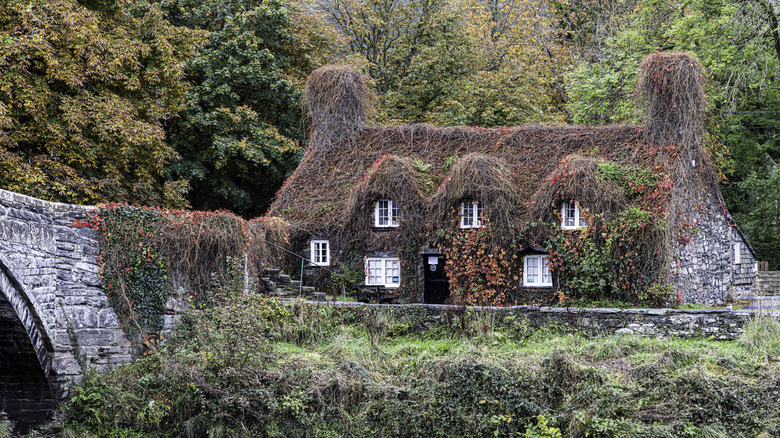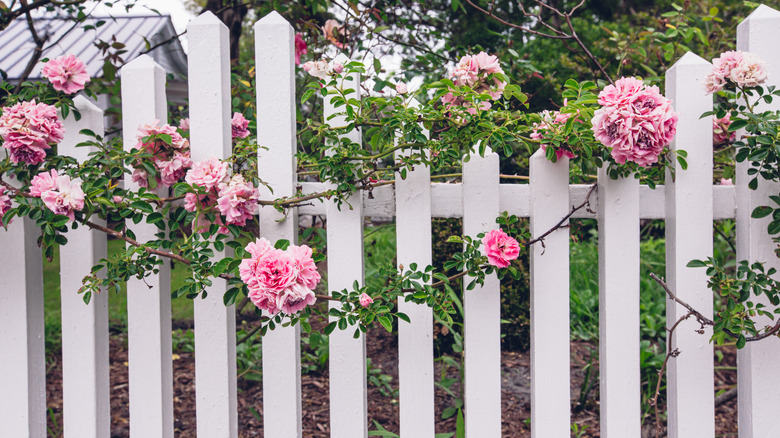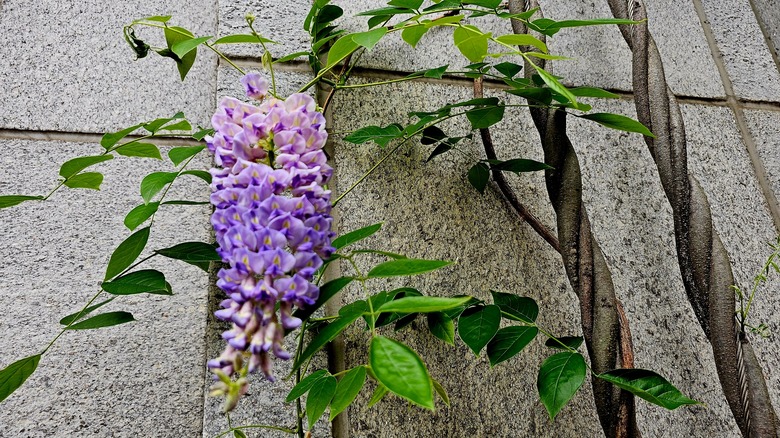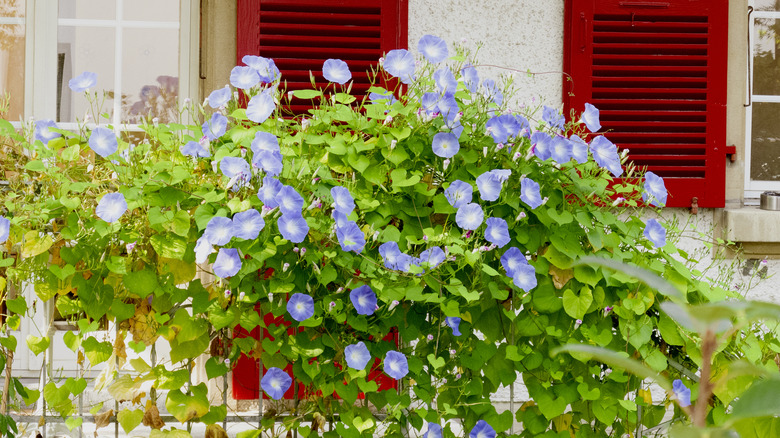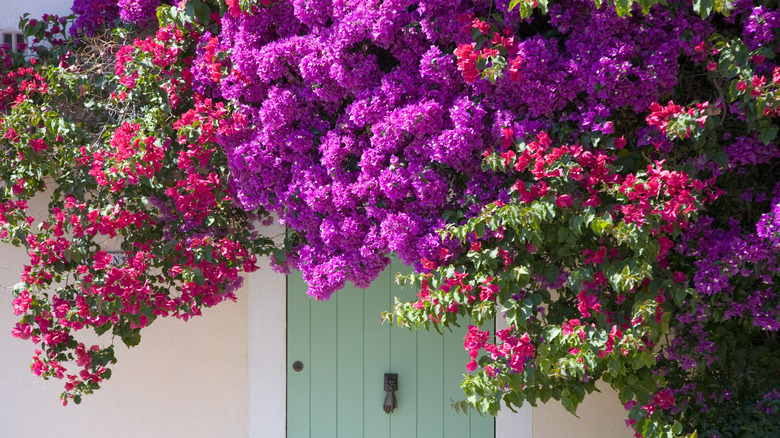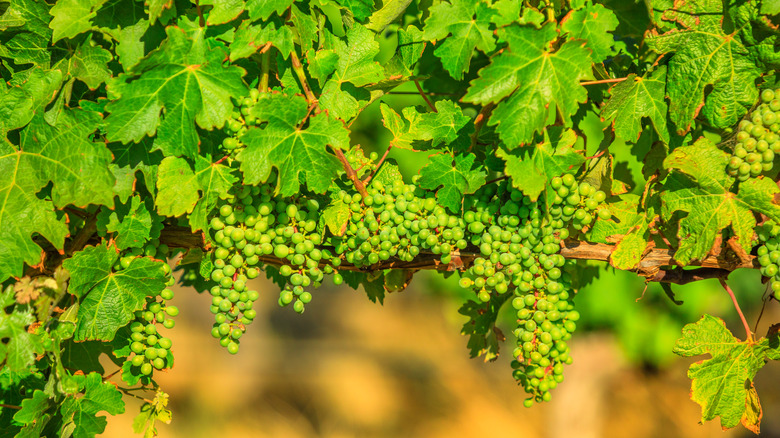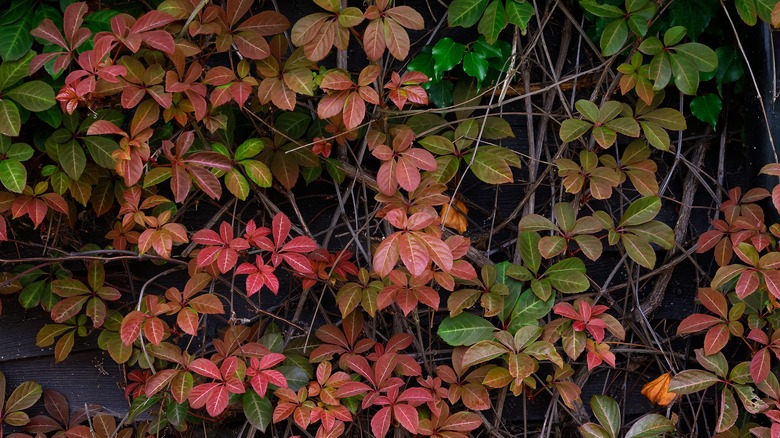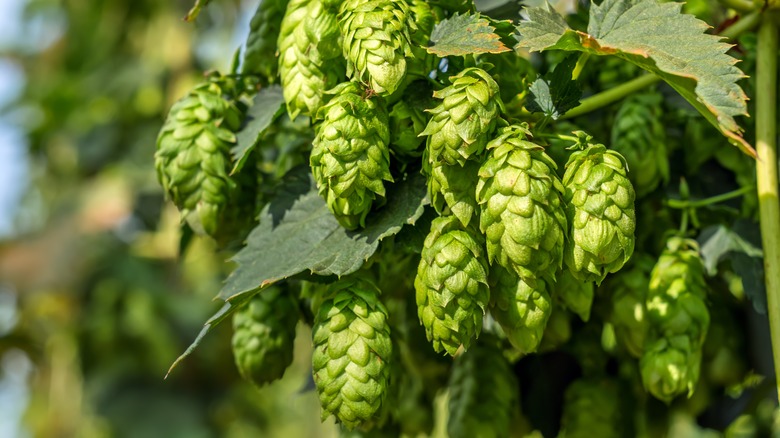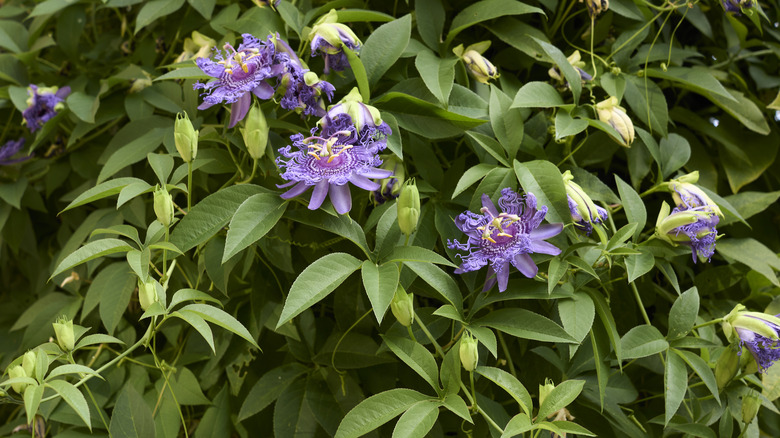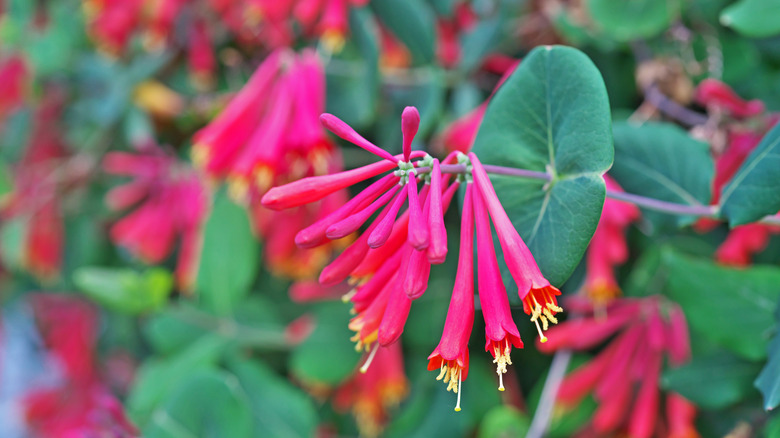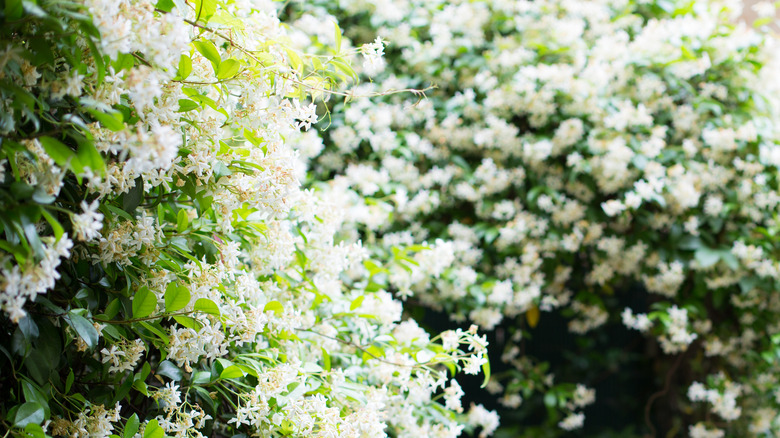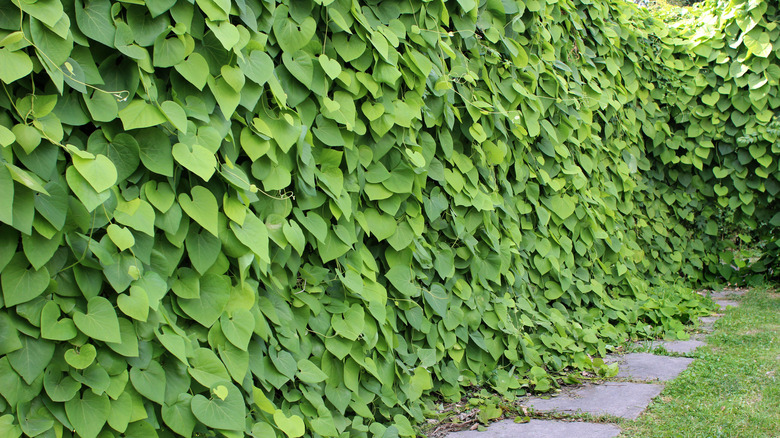Climbing Plants That Will Make You Feel Like You're Living A Fairytale
Who doesn't aspire to live in a fairytale castle or the quintessential storybook cottage in the woods? With the rise of cottagecore aesthetic and dark academia mood boards, many of us are thinking how we can replicate this fantasy lifestyle in our own homes. While there are plenty of ways to decorate the interiors of your home to get that cottagecore feeling, there are also ways to include this look outside of the home as well. Think of it as adding some fairytale curb appeal, and one big way that'll have your house looking positively storybook is ... climbing plants.
There's just something positively magical about a climbing vine, like roses, grapes, or hops, creeping out over a trellis, fence, or your very own castle wall. Think Rapunzel's POV looking down from her tower or Snow White and the Dwarves' cottage plunged deep into the woods. These climbing plants feel romantic and fantastical so you can live out your fairytale aesthetic dreams. There are countless climbing plants you should grow on your property to get this look. In fact, you'll be spoiled for choice when the time comes to storybook-ify your yard, whether you're a gardening savant like Thumbelina or trying your hand at land plants for the first time like the Little Mermaid.
Roses
The ultimate symbol of romantic fairytales ("Beauty and the Beast," anyone?), roses are the perfect addition to the yard for an English countryside feel. Roses can be trained, albeit with some effort, to climb on fences and trellises to create walls of beautifully fragrant flowers. Coming in many colors, with some of the most fairytale-like including bright pinks and whites for a romantic feel or a deep red for villain vibes. Roses do best in USDA zones 5 through 8, and as they can be finicky, be sure to have the proper pruning equipment and skill before committing to this plant.
Wisteria
Wisteria is a hardy plant that's famous for its color in the springtime, but there are several species, some of which are invasive in many areas of North America. These include Japanese Wisteria (Wisteria floribunda) and Chinese Wisteria (Wisteria sinensis); both can displace native plants and disrupt light availability for other growth — seems like something Maleficent might cook up! American Wisteria (Wisteria frutescens) though, is not invasive. Due to its sturdy nature, these plants need equally sturdy support, so position them on well-built surfaces, rather than delicate fences, as they can damage flimsier structures. Wisteria thrives in zones 5 through 9.
Morning glory
Morning glory (Ipomoea spp.) is a playful climbing plant whose brilliant trumpet blooms feel almost eccentric or quirky if it were a part of the fairytale world. You could just imagine the Cheshire Cat taking a nap against a truck trunk covered in these flowers. While they may bring an air of fantasy, some species of morning glories are invasive, so check with your local extension service before planting. These annuals grow well in sunny spots in zones 2 through 11.
Bougainvillea
A plant that looks like it's straight out of Disney's "Encanto," the Bougainvillea thrives in warmer, more tropical climates like hardiness zone 9 through 11, since it hates frost and freeze. A thorny, woody climbing plant, its brilliant blooms come in a variety of hues from saturated fuchsias to tropical oranges to crisp whites. Since these plants prefer drier soil, they make for a great drought-tolerant alternative to many of the plants on this list that require an abundance of water. While pruning this plant is necessary, it does well with less intervention making it ideal for newer gardeners wanting a climbing plant.
Grapes
While grapes (Vitis spp.) may not be a classic fairytale plant, climbing grape vines do feel straight out of more modern depictions of fairytales, like Drew Barrymore's "Ever After." Grapes are natural climbers so training them to grow over a pergola for Mediterranean (zones 6 and above) vibes is not a fool's errand at all. Other than for aesthetics, grapes are quite practical since the plant's leaves offer significant shade during warm months. Just be aware some varieties may get weedy as they're not native to North America. However if this plant gets aggressive, it can be extracted easily.
Chinese Virginia Creeper
The more sustainable friendly option to English Ivy, Chinese Virginia Creeper (Parthenocissus henryana) is a robust climber that exudes quintessential fairytale charm. A popular option for those stately mansion homes in New England or the colonial south (zones 8-9), Chinese Virginia Creeper lends an air of dignity to your home landscaping and boosts curb appeal. The advantage of this vine is that it grows at a slower rate and is much less prolific than its aggressive American counterpart (Parthenocissus quinquefolia), so you can grow this in a smaller garden without risk of it taking over too quickly.
Hops
Hops (Humulus lupulus) are underrated climbing plants, usually associated more with beer breweries rather than fairytale decor, but their monochromatic budding florals adds a fairytale touch. Although they are often grown in cooler climates, hops are hardy in zones 4 though 9. They grow expeditiously, making for some quick pay off and gratification. They can be trained to climb a number of surfaces, including trellises and arches, and hops can even be worked to climb on walls as well to mimic that ivy-covered wall aesthetic.
Passionflower vine
Passionflower (Passiflora incarnata) vines feature the most vibrantly colored yet slightly cartoonish flowers that give off whimsical "Alice in Wonderland" looks. With its curly petals and distinct color, this vine is a fun seasonal climber that feels a little less serious than other climbing plants. Even without the buds, the leaves of the vine craft a rainforest-like environment that last from spring through fall in zones 6 through 11. Though not invasive, passionflower is quite aggressive as their deep root colony creates networks like mint or bamboo; volunteer passionflowers can crop up in places many feet away from the original plant.
Honeysuckle
Honeysuckle (Lonicera sempervirens) has a delightful color and shape that makes for yet another whimsical option for the yard. Trumpet honeysuckle (also called Woodbine, coral honeysuckle, or even simply honeysuckle) is native to the southeastern U.S. and thrives in zones 5a though 10b with full sun and good warmth. Given its woody, forest roots (literally), this option will evoke a spirited away woodland cottage feel, but be aware that honeysuckle needs a strong support structure, like a well-built trellis or arbor, to survive. There's plenty you should know before planting honeysuckle, but overall it's a beautiful ornamental addition to your landscaping.
Jasmine
It's fragrance alone is enough to take you to another world, but its petite white blossoms are the stuff of fairytale dreams. Jasmine (Jasminum) varieties, native to central/western Asia, grow well in Mediterranean or in warm and humid climates. Overall, most species of this plant are comfortable in the warmer weather of zones 6 though 10. Due to its rapid growth and non-native nature, though, some jasmine species are invasive in parts of the United States. When cared for properly with appropriate moisture and shade levels, and growth monitoring, the result is one that'll transport you into the pages of "Arabian Nights."
Dutchman's Pipe
The zany nickname for the pipevine (Aristolochia macrophylla), the Dutchman's pipe is a hardy, wooden vine whose leaves change color with the seasons. It's native to eastern North America (and grows well in zones 5 through 8), making it a non-invasive alternative to ivy. The vines' leaves grow in distinctive heart shapes, and some species even exhibit a silvery, deep green underside. Leaves can reach lengths of up to 12 inches, so Dutchman's pipe can create quite that dense cover on surfaces for that overall "Sleeping Beauty" look. However, it has a high flammability rating, so don't plant too near structures.
